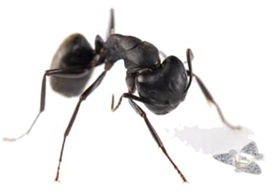US engineers create ‘smallest-ever human-made flying structure’
Engineers from Illinois’ Northwestern University have created an electronic microchip or “microflier” with flight capabilities, which can help monitor air pollution levels and airborne diseases.
Context
Engineers from Illinois’ Northwestern University have created an electronic microchip or “microflier” with flight capabilities, which can help monitor air pollution levels and airborne diseases.
About
- This microflier is the “smallest-ever human-made flying structures”.
- The research has been published in Nature and is featured on the cover of the journal.
- Size: about the size of a grain of sand.
- Working: It does not require an engine or a motor. Instead, it catches flight on the wind — much like a maple tree’s propeller seed — and spins like a helicopter through the air toward the ground.
- These microfliers also can be packed with ultra-miniaturised technology, including sensors, power sources, antennas for wireless communication and embedded memory to store data.


